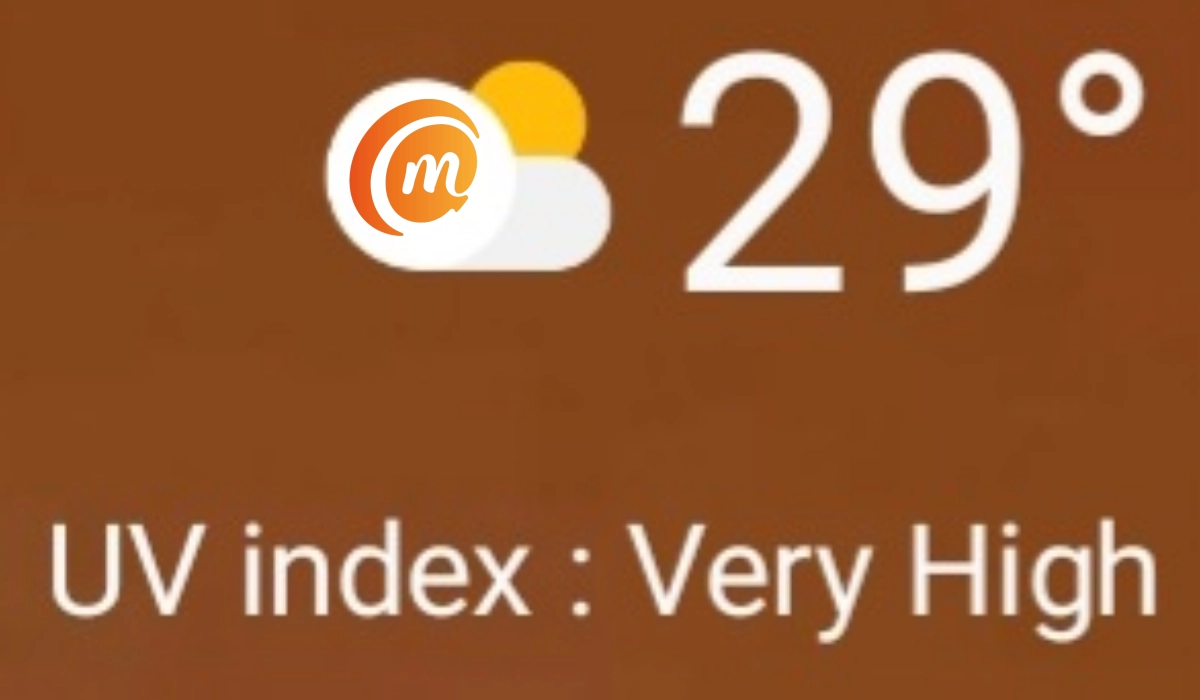I picked up my smartphone the other day to get a few things done, when I noticed that the weather widget on the home screen has a new information. I make it a point of duty to pay attention to weather information. This time, on display was the following: “UV Index: Very High”.
I have owned hundreds of smartphones and had never seen this particular notice before now. Being a science major back in school, I knew what UV meant – ultraviolet. I knew enough to know that ultraviolet rays exist on the electromagnetic spectrum that includes light, radio waves, x-rays, etc. And I knew enough to know that the index being classified as very high was a warning. Let me walk you through what it means and the implications.

Table of Contents
What UV Index: Very High Means
The UV Index is a measure of the strength of ultraviolet (UV) radiation from the sun. It is a scale that ranges from 0 to 11+, with higher values indicating stronger UV radiation. The UV Index takes into account factors such as the angle of the sun in the sky, the amount of ozone in the atmosphere, and the altitude of the location.
When your phone says that the UV Index is very high, it means that the level of UV radiation is at a level of 8-10, which is considered high exposure. This indicates that there is a significant risk of skin damage and sunburn if you spend time outside without protection. It is recommended to take precautions such as wearing protective clothing, applying sunscreen with a high SPF, and avoiding direct sunlight during peak hours when the UV Index is highest.
What are the different levels of the UV Index?
The UV Index is a measure of the strength of ultraviolet (UV) radiation from the sun. It ranges from 0 to 11+, with higher values indicating stronger UV radiation. Here are the different levels of the UV Index and what they mean:
- 0-2: Low. This means that there is a minimal risk of overexposure to UV radiation. No protection is needed, but it is still important to be aware of the UV Index and take precautions if you will be outside for an extended period of time.
- 3-5: Moderate. This means that there is a moderate risk of overexposure to UV radiation. It is recommended to wear protective clothing, use sunscreen, and seek shade during peak hours when the UV Index is highest.
- 6-7: High. This means that there is a high risk of overexposure to UV radiation. It is important to take precautions such as wearing protective clothing, using sunscreen with a high SPF, and avoiding direct sunlight during peak hours.
- 8-10: Very High. This means that there is a very high risk of overexposure to UV radiation. It is crucial to take precautions such as wearing protective clothing, using sunscreen with a high SPF, seeking shade, and limiting outdoor activities during peak hours.
- 11+: Extreme. This means that there is an extreme risk of overexposure to UV radiation. It is essential to take all possible precautions to protect your skin, including wearing protective clothing, using sunscreen with a high SPF, seeking shade, and avoiding direct sunlight during peak hours.
Being aware of the different levels of the UV Index and taking appropriate precautions will help protect your skin from the harmful effects of ultraviolet radiation.
What To Do When The UV Index Is Very High
When your phone says that the UV Index is very high, it is important to take precautions to protect your skin from the harmful effects of UV radiation. Here are some practical steps you can take:
- Wear protective clothing: Cover up as much of your skin as possible with clothing that is tightly woven and provides good coverage. This includes long-sleeved shirts, pants, and wide-brimmed hats.
- Apply sunscreen: Use a broad-spectrum sunscreen with an SPF of at least 30, and apply it generously to all exposed skin. Reapply every two hours, or more often if you are sweating or swimming.
- Seek shade: Try to stay in the shade as much as possible, especially during peak hours when the UV Index is highest. Use an umbrella or seek shelter under a tree or awning.
- Wear sunglasses: Protect your eyes from UV radiation by wearing sunglasses that block 100% of both UVA and UVB rays.
- Limit outdoor activities: Try to limit your time outdoors during peak hours when the UV Index is highest, typically between 10am and 4pm.
By taking these practical steps, you can help protect your skin from the harmful effects of UV radiation and reduce your risk of skin damage and sunburn.
Another important takeaway from this is that you pay attention to the weather widget on your smartphone’s homescreen. The information displayed can save your life. If you don’t have a weather widget installed on your phone’s homescreen, add one to it today. Cheers.

